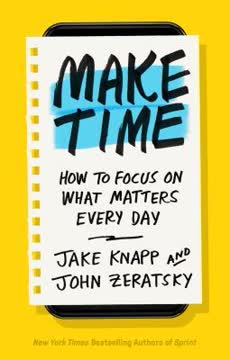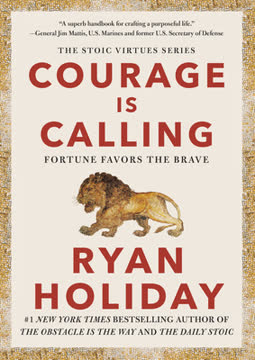Key Takeaways
1. Effortless State: Achieve More by Trying Less
The Effortless State is an experience many of us have had when we are physically rested, emotionally unburdened, and mentally energized.
Overexertion is counterproductive. Many of us believe that working harder is the key to success, but this often leads to burnout and diminishing returns. The Effortless State is about finding a balance where you can achieve more with less effort.
Key components of the Effortless State:
- Physical rest
- Emotional unburdening
- Mental clarity
- Present-moment awareness
- Focused attention on what's important
By cultivating this state, you can:
- Increase productivity
- Enhance creativity
- Improve decision-making
- Reduce stress and anxiety
- Achieve better results with less strain
2. Invert the Problem: Ask "What If This Could Be Easy?"
Instead of asking, "Why is this so hard?," invert the question by asking, "What if this could be easy?"
Challenge your assumptions. We often assume that important tasks must be difficult, but this belief can be self-defeating. By inverting the problem, we open ourselves to creative solutions and simpler approaches.
Benefits of inversion:
- Reveals hidden opportunities
- Encourages creative problem-solving
- Reduces unnecessary complexity
- Increases motivation and momentum
Examples of inversion in action:
- Instead of struggling to write a perfect first draft, ask: "How can I make starting easier?"
- Rather than forcing yourself to exercise for an hour, consider: "What's the minimum effective workout I can do consistently?"
- When facing a daunting project, inquire: "What's the simplest way to make meaningful progress?"
3. Enjoy the Process: Pair Essential Tasks with Enjoyable Activities
Pair the most essential activities with the most enjoyable ones.
Make the important fun. By combining necessary tasks with activities we enjoy, we can increase motivation, reduce procrastination, and make progress more sustainable.
Strategies for pairing:
- Listen to favorite podcasts while exercising
- Turn household chores into a family game or competition
- Combine work meetings with walks in nature
- Create a pleasant environment for studying or working
Benefits of this approach:
- Increased motivation and engagement
- Reduced resistance to essential tasks
- Improved consistency and follow-through
- Greater overall satisfaction and well-being
4. Release Emotional Burdens: Let Go of What Doesn't Serve You
When you focus on what you lack, you lose what you have. When you focus on what you have, you get what you lack.
Cultivate gratitude and forgiveness. Holding onto grudges, regrets, and negative emotions drains our energy and makes everything harder. By consciously releasing these burdens, we free up mental and emotional resources for what truly matters.
Practical steps for emotional release:
- Practice daily gratitude
- Forgive others and yourself
- Let go of outdated goals or expectations
- Focus on what you can control
- Reframe negative experiences as learning opportunities
Benefits of emotional unburdening:
- Increased mental clarity and focus
- Improved relationships
- Enhanced resilience and adaptability
- Greater sense of peace and contentment
5. Rest Strategically: The Power of Doing Nothing
Do not do more today than you can completely recover from by tomorrow.
Prioritize recovery. In our always-on culture, rest is often seen as lazy or unproductive. However, strategic rest is essential for sustained high performance and creativity.
Effective rest strategies:
- Take regular breaks during work (e.g., 90-minute focus sessions with 15-minute breaks)
- Practice "effortless napping" (10-20 minutes)
- Ensure 7-9 hours of quality sleep nightly
- Engage in deliberate relaxation techniques (meditation, deep breathing)
- Schedule regular "do nothing" time
Benefits of strategic rest:
- Improved cognitive function and decision-making
- Enhanced creativity and problem-solving
- Better emotional regulation
- Increased overall productivity and effectiveness
- Reduced risk of burnout and health issues
6. Notice the Present: Harness the Power of Awareness
To see others more clearly, set aside your opinions, advice, and judgment, and put their truth above your own.
Cultivate present-moment awareness. Our minds are often cluttered with worries about the future or regrets about the past. By training ourselves to notice the present moment, we can make better decisions and connect more deeply with others.
Techniques for increasing awareness:
- Practice mindfulness meditation
- Engage in active listening
- Observe your thoughts without judgment
- Use your senses to anchor yourself in the present
- Regularly check in with your body and emotions
Benefits of increased awareness:
- Improved relationships and empathy
- Better decision-making
- Reduced stress and anxiety
- Enhanced creativity and problem-solving
- Greater overall life satisfaction
7. Define Clear Outcomes: Visualize What "Done" Looks Like
To get started on an essential project, first define what "done" looks like.
Clarity creates momentum. Without a clear vision of the end result, projects can drag on indefinitely or lose focus. By defining what "done" looks like, we create a target to aim for and make it easier to take action.
Steps to define clear outcomes:
- Visualize the desired end result in detail
- Write down specific, measurable criteria for completion
- Break the outcome into smaller, manageable milestones
- Identify potential obstacles and plan for them
- Share your vision with others for accountability and support
Benefits of clear outcomes:
- Increased motivation and focus
- Easier decision-making throughout the project
- Reduced procrastination and overwhelm
- Improved communication with collaborators
- Greater sense of accomplishment upon completion
8. Start with the Obvious: Take the First Simple Step
Make the first action the most obvious one.
Overcome inertia with simplicity. We often procrastinate because we're overwhelmed by the complexity of a task. By identifying and taking the simplest first step, we build momentum and make progress easier.
Strategies for identifying the first step:
- Ask, "What's the tiniest action I could take right now?"
- Break the task down into its most basic components
- Focus on physical, concrete actions (e.g., "Open a document" rather than "Start writing")
- Use the "two-minute rule" - if it takes less than two minutes, do it now
Benefits of starting with the obvious:
- Reduced procrastination and overwhelm
- Increased motivation and momentum
- Builds confidence through small wins
- Makes complex projects more manageable
- Encourages consistent progress over time
9. Simplify Ruthlessly: Remove Unnecessary Steps
To simplify the process, don't simplify the steps: simply remove them.
Eliminate the nonessential. We often overcomplicate tasks by adding unnecessary steps or trying to achieve perfection. By ruthlessly simplifying and focusing on the core essentials, we can achieve better results with less effort.
Techniques for simplification:
- Regularly review processes and eliminate redundant steps
- Question assumptions about what's truly necessary
- Focus on the 20% of actions that produce 80% of results
- Automate or delegate low-value tasks
- Use constraints to force creativity and efficiency
Benefits of ruthless simplification:
- Increased productivity and efficiency
- Reduced stress and cognitive load
- Improved focus on what truly matters
- Greater agility and adaptability
- Enhanced ability to scale and replicate successful processes
10. Embrace Imperfection: The Courage to Be Rubbish
When you start a project, start with rubbish.
Lower the bar to start. Perfectionism often prevents us from making progress. By embracing imperfection and giving ourselves permission to produce "rubbish" at first, we overcome resistance and create opportunities for improvement.
Strategies for embracing imperfection:
- Adopt a "zero draft" approach to writing
- Set intentionally low expectations for first attempts
- Focus on quantity over quality in early stages
- Celebrate small wins and incremental progress
- Use time constraints to force imperfect action
Benefits of embracing imperfection:
- Reduced procrastination and creative blocks
- Increased output and productivity
- More opportunities for learning and improvement
- Greater resilience and adaptability
- Enhanced creativity through reduced self-censorship
11. Set an Effortless Pace: Slow Is Smooth, Smooth Is Fast
Set an effortless pace: slow is smooth, smooth is fast.
Sustainability trumps speed. Trying to work at maximum intensity all the time leads to burnout and diminishing returns. By setting a sustainable, "effortless" pace, we can achieve more in the long run.
Techniques for setting an effortless pace:
- Establish upper and lower bounds for daily progress
- Use the "never less than X, never more than Y" rule
- Build in regular rest and recovery periods
- Focus on consistency rather than intensity
- Adjust your pace based on energy levels and circumstances
Benefits of an effortless pace:
- Increased long-term productivity
- Reduced risk of burnout and exhaustion
- Improved quality of work
- Greater enjoyment of the process
- Enhanced ability to sustain effort over time
12. Leverage Knowledge and Trust: Achieve Residual Results
You gain credibility. People come to you. Opportunities come to you. You gain incredible leverage when you are among the only people with that precise expertise.
Create compounding value. By focusing on developing unique knowledge and building high-trust relationships, we can create "residual results" that continue to provide value with minimal additional effort.
Strategies for leveraging knowledge and trust:
- Develop expertise in niche areas
- Share knowledge freely through teaching and writing
- Build a reputation for reliability and integrity
- Invest in high-quality, long-term relationships
- Create systems and processes that can be replicated
Benefits of residual results:
- Increased opportunities and influence
- Reduced need for constant effort to achieve results
- Enhanced ability to scale impact
- Greater overall effectiveness and efficiency
- Improved work-life balance and satisfaction
Last updated:
FAQ
What's "Effortless: Make It Easier to Do What Matters Most" about?
- Core Concept: The book by Greg McKeown explores how to make essential tasks easier to accomplish by focusing on what truly matters and eliminating unnecessary effort.
- Three-Part Structure: It is divided into three parts: Effortless State, Effortless Action, and Effortless Results, each providing strategies to simplify and streamline tasks.
- Philosophy: The book challenges the notion that hard work is inherently valuable and suggests that finding easier paths can lead to better outcomes.
- Practical Advice: It offers actionable steps to achieve more with less effort, emphasizing the importance of clarity, focus, and simplicity.
Why should I read "Effortless" by Greg McKeown?
- Overcoming Burnout: If you're feeling overwhelmed or on the brink of burnout, this book provides strategies to manage your workload more effectively.
- Improving Productivity: It offers insights into achieving higher productivity by focusing on essential tasks and eliminating unnecessary ones.
- Life Balance: The book emphasizes the importance of balancing work and personal life, making it relevant for anyone seeking a more fulfilling lifestyle.
- Practical Tools: McKeown provides practical tools and techniques that can be applied immediately to make life and work more manageable.
What are the key takeaways of "Effortless"?
- Effortless State: Achieving a state of mental clarity and focus is crucial for making tasks feel less burdensome.
- Effortless Action: Simplifying processes and taking the first obvious step can lead to significant progress without overexertion.
- Effortless Results: Leveraging principles like automation and trust can yield ongoing benefits with minimal additional effort.
- Mindset Shift: The book encourages a shift from the belief that hard work is the only path to success to finding smarter, easier ways to achieve goals.
How does Greg McKeown define the "Effortless State"?
- Mental Clarity: The Effortless State is characterized by being mentally clear, focused, and present in the moment.
- Emotional Unburdening: It involves letting go of emotional burdens and distractions that make tasks feel harder.
- Physical Rest: Being physically rested is essential to maintaining the Effortless State, allowing for better focus and energy.
- Heightened Awareness: In this state, individuals can discern what truly matters and take appropriate actions with ease.
What is the "Effortless Action" concept in the book?
- Simplification: Effortless Action involves simplifying tasks by removing unnecessary steps and focusing on the most obvious actions.
- First Steps: It emphasizes the importance of taking the first obvious step to gain momentum and avoid procrastination.
- Pacing: The book advises setting a sustainable pace to avoid burnout and maintain consistent progress.
- Microbursts: Utilizing short, focused bursts of activity can lead to significant progress on essential projects.
How can one achieve "Effortless Results" according to McKeown?
- Leverage Principles: Applying principles like automation and trust can lead to ongoing benefits with minimal effort.
- Residual Results: Effortless Results are achieved when initial efforts continue to yield benefits over time without additional input.
- High-Leverage Activities: Focusing on activities that provide the highest return on effort is key to achieving Effortless Results.
- Trust and Delegation: Building trust within teams and delegating tasks effectively can enhance productivity and outcomes.
What are some practical strategies from "Effortless" for simplifying tasks?
- Define "Done": Clearly define what completion looks like for any task to avoid unnecessary work and focus efforts.
- Start with Zero: Begin with the simplest version of a task and add complexity only if necessary.
- Automate: Use technology and systems to automate repetitive tasks, freeing up mental and physical resources.
- Use Checklists: Implement checklists to ensure essential steps are completed without relying on memory.
What is the "Effortless Inversion" technique?
- Question Assumptions: Effortless Inversion involves questioning the assumption that important tasks must be hard and finding easier ways to accomplish them.
- Indirect Approaches: It encourages looking for indirect approaches to solve problems, which can often be more effective.
- Simplify Complexity: By inverting the problem, one can often find simpler solutions that were not initially apparent.
- Challenge Norms: This technique challenges the status quo and encourages innovative thinking to make tasks easier.
How does McKeown suggest dealing with emotional burdens?
- Letting Go: The book emphasizes the importance of releasing emotional burdens, such as grudges and regrets, to achieve an Effortless State.
- Focus on Gratitude: Shifting focus from what is lacking to what one has can transform negative emotions into positive energy.
- Forgiveness: Practicing forgiveness can free up mental resources and reduce stress, making it easier to focus on what matters.
- Mindset Shift: Adopting a mindset that prioritizes emotional well-being can lead to a more effortless approach to life and work.
What role does trust play in achieving Effortless Results?
- High-Trust Teams: Trust is essential for creating high-functioning teams that can achieve results with less effort.
- Delegation: Trusting team members to take ownership of tasks can lead to more efficient and effective outcomes.
- Reduced Friction: High levels of trust reduce friction and conflict, allowing teams to focus on achieving goals.
- Empowerment: Trust empowers individuals to take initiative and make decisions, leading to better performance and results.
What are the best quotes from "Effortless" and what do they mean?
- "Not everything has to be so hard." This quote encapsulates the book's core message that finding easier paths can lead to better outcomes.
- "Burnout is not a badge of honor." It challenges the cultural glorification of overwork and emphasizes the importance of balance and well-being.
- "When you focus on what you have, you get what you lack." This highlights the power of gratitude and positive focus in achieving goals.
- "The Effortless State is one in which you are physically rested, emotionally unburdened, and mentally energized." It describes the ideal state for achieving more with less effort.
How can "Effortless" help in personal and professional life?
- Work-Life Balance: The book provides strategies for achieving a better balance between work and personal life by focusing on essentials.
- Increased Productivity: By simplifying tasks and focusing on high-leverage activities, individuals can increase productivity without burnout.
- Emotional Well-being: It offers techniques for managing stress and emotional burdens, leading to improved mental health.
- Sustainable Success: The principles in "Effortless" promote sustainable success by encouraging smarter, not harder, work.
Review Summary
Effortless is highly praised for its insights on simplifying life and work. Readers appreciate McKeown's practical advice on making essential tasks easier, defining clear goals, and achieving results without burnout. Many found the book's concepts applicable to both personal and professional life. Some reviewers noted similarities to McKeown's previous work, Essentialism, but still found value in the new perspectives offered. The book's conversational style and relatable examples were frequently commended, making it an engaging and impactful read for those seeking productivity and life balance.
Similar Books










Download PDF
Download EPUB
.epub digital book format is ideal for reading ebooks on phones, tablets, and e-readers.





